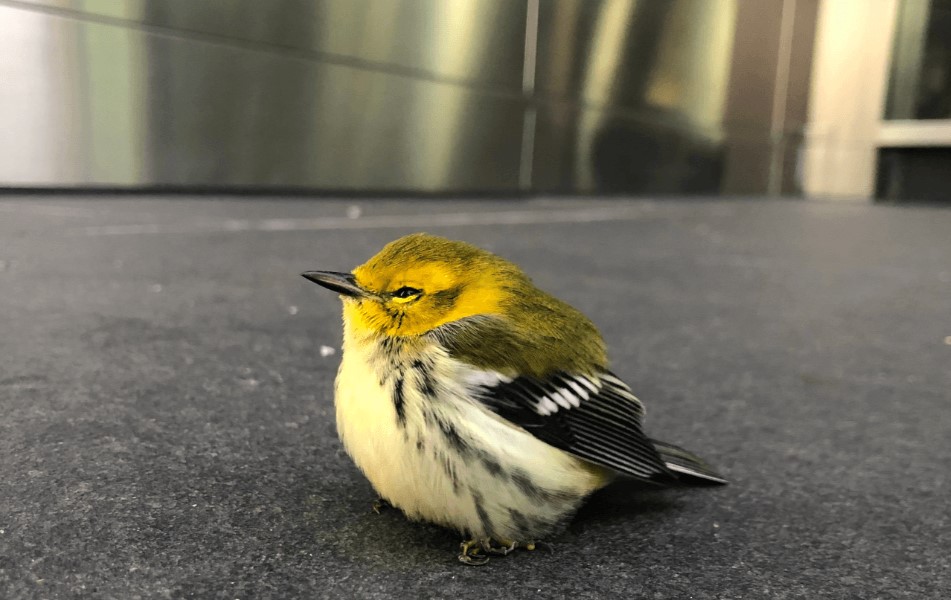Is your facility a bird-friendly building? If not, what steps can you take to help protect the winged wildlife?
A research study published in PLOS ONE has uncovered alarming new evidence that building collisions are killing significantly more birds than previously estimated—well over 1 billion annually in the United States alone.

The research, conducted by scientists at American Bird Conservancy (ABC), Fordham University, NYC Bird Alliance, and Stony Brook University, examined outcomes for over 3,000 birds injured in building collisions and brought to rehabilitators across multiple states. Their findings uncovered that only 40% of birds with injuries from collisions survive, even with the highest standards of wildlife rehabilitator care, suggesting that current mortality estimates based solely on birds found dead at collision sites vastly undercount the true toll.
“Even under the best care conditions provided by wildlife rehabilitators, 60 percent of collision victims ultimately died from their injuries,” said lead author Ar Kornreich of Fordham University. “This indicates that birds who appear stunned or fly away after a collision are far more likely to die than previously thought.”
Previous research estimated between 365 million and 988 million birds die annually from building collisions in the U.S. However, these new research findings suggest that even this upper estimate falls short of the true impact. By factoring in the high mortality rate of birds that initially survive collision but later die from their injuries, this new study pushes the estimated death toll well beyond the 1 billion mark.
“Bird populations across the globe are in steep decline, in part due to collisions with buildings,” added co-author Dustin Partridge, PhD, of NYC Bird Alliance, formerly NYC Audubon. “Unfortunately, our work shows population-level declines are not something we can fix with rehabilitation. If we don’t address artificial light and glass, we’ll continue to lose over a billion birds in the U.S. annually—a toll our ecosystems can’t sustain.”
This study not only sheds light on the magnitude of the problem but also points to potential solutions. By implementing bird-friendly design in new construction and retrofitting existing buildings, building owners can significantly reduce bird collisions. Additionally, reducing artificial light at night can help mitigate the disorienting effect on night-migrating birds, further preventing collisions and concentrations of birds in human-dominated landscapes.
“Birds generally cannot see or recognize glass. When they see vegetation or the sky reflected in windows, they perceive it as habitat and do not know there’s a barrier in the way that they cannot fly through,” added senior author Kaitlyn Parkins of ABC. “The good news is, people can help. For existing buildings and homes, the easiest fix is to add inexpensive, commercially available bird-safe window treatments such as those tested by ABC.”
ALSO READ: How to Prevent Bird Window Collisions
The study’s findings paint a grim picture of the challenges faced by birds and the need for solutions to be adopted by building owners, especially during the peak of fall and spring migration. Most birds brought to rehabilitation centers due to window collisions that later died were found to be otherwise healthy, underscoring the indiscriminate nature of this threat. Birds that are stunned by window collisions often are in treatment for at least a day before dying, demonstrating the gradual lethality of window collisions. Unseen injuries such as bruising, eye ulcers, and fractures prevent them from continuing their annual migratory journeys.
“We’ve all witnessed birds collide with buildings, shake it off, and fly away,” said co-author Mason Youngblood, PhD, of Stony Brook University. “It’s natural to assume that these birds survive, but our research reveals a stark reality—most of these birds die shortly after. This sobering finding demonstrates the importance of using statistical analyses to shape urban conservation policy.”
“As a licensed wildlife rehabber myself, I know the critical role rehabilitation centers play in improving the lives of individual birds and communicating the needs of wildlife,” added Kornreich. “But to reverse alarming declines in bird populations and protect biodiversity, we need collaboration with researchers, policymakers, and the public to address this critical conservation issue.”
